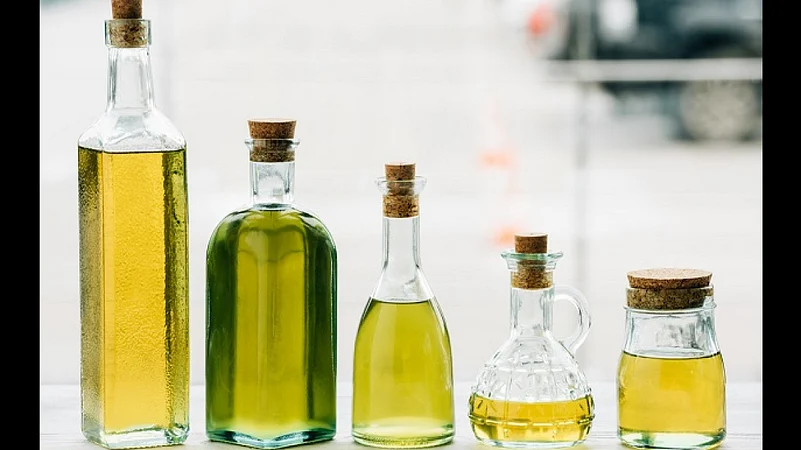Edible oil prices are likely to go up after Russian President Vladimir Putin launched military operation in Ukraine.
The prices of six edible oils — groundnut oil, mustard oil, vanaspati, soya oil, sunflower oil and palm oil — have risen between 9% and 56% at all-India levels in the last one year, data on the Department of Consumer Affairs website show.
Ukraine and Russia are the major suppliers of Sunflower oil and the supply chain will be disturbed amid tensions between the two. India imports around 90 per cent of sunflower oil from Russia and Ukraine, hence, the crisis is likely to impact prices and supply in the country.
Advertisement
India had imported a total of 18.93 lakh tonnes of crude sunflower oil between November 2020 and October 2021. Of this 13.97 lakh tonnes was from Ukraine alone. Argentina (2.24 lakh tonnes) and Russia (2.22 lakh tonnes) are the other major suppliers.
The retail price of mustard oil has increased to Rs 191.13 per kg (Feb 24), from Rs 185.25 per kg a month ago. The prices of soya oil and sunflower oil, too, have increased more than 18% and 11% since last year respectively.
Mustard oil and palm oil saw a jump of 30.8& and 15.2% in a year, respectivey.
Advertisement
The price rise has been steep in the last two years -- Groundnut oil has increased from Rs 120 per litre in March 2020 to 179.79 as of Feb 24, 2021, a 39.8 per cent increase.
Similarly, mustard oil has gone up 51.3% from Rs 113 per litre in 2020 to 191.13 as of Feb 24, 2021. The price of palm oil has also increased 44.7% from Rs 85 to Rs 134 per litre during this period.
Vanaspati prices also went up from Rs 80 per litre to Rs 141.75 per litre in the same period, a 55.6% rise.
Sunflower oil was selling at Rs 110 per litre in 2020, it is priced at Rs 162.79 per litre as of February 24, 2022, a 38.7& increase.
Edible oil prices have seen a spike globally and in India since Covid-19 pandemic. As restaurants and hotels have reopened with full capacity, the oil demand is on the rise.
Here's what led to the price rise:
Unfavourable weather in major oil-exporting countries coupled with a labour shortage due to the Covid-19 pandemic led to a decline in exports from oil producers.
Soybean oil prices rose last year because of dry weather in Argentina, the largest exporter, and higher demand from major consumers India and China. Sunflower oil prices were up because of drought-like conditions in Ukraine and Russia.
About 85 percent of soybean oil in India is imported from Argentina and Brazil, while 90 percent of sunflower oil is imported from Ukraine and Russia, Moneycontrol reported citing CRISIL report.
Advertisement
Almost all of India’s palm oil requirements are met from Indonesia and Malaysia.
In order to control the prices, the government slashed import duty on edible oil several times in 2021.
Major companies such as Adani Wilmar (Fortune) and Marico (Saffola) slashed prices in the third quarter.
In August, the government also announced an investment of Rs 11,040 crore to boost the cultivation of palm oil in the country under the National Mission on Edible Oils – Oil Palm.
In 2019, India consumed about 10 million tonnes of palm oil, of which only 0.25 million tonnes was produced domestically while the rest was imported, Moneycontrol reported citing ICRA's report.
Advertisement
The prices of edible oils dropped by 10-30 per cent from their January peaks.















 Just one email a week
Just one email a week